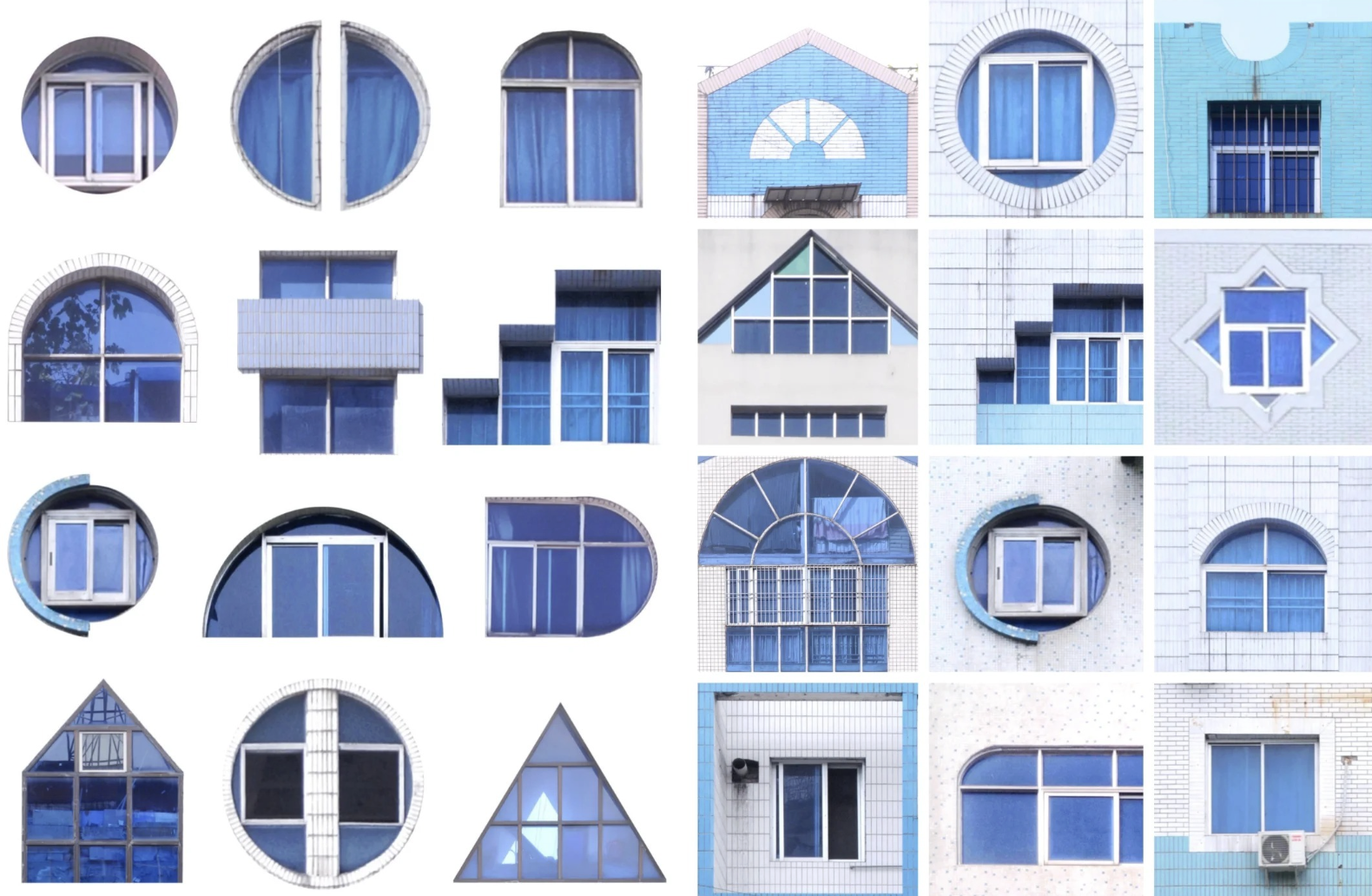Leon Chang, a Beijing-based features director working in fashion media, believes this year has been a turning point for fashion media.
Growing up as a fan of couture and fashion, Chang mapped out his future from a young age. Even in high school, he knew he would one day be an editor for a fashion-focused publication.
This May, he accepted an offer from a newly launched magazine, climbing to a managerial level after years of internships and, later, editorial work.
The publication, GLASS Magazine, is a British fashion title that targets a female audience. And while the title has been published on the Queen’s soil since 2009, it only launched a Chinese edition this past March.
As a newcomer, GLASS has been quick to achieve recognition in the competitive field of fashion media.
“We have a special method here for running fashion magazines,” Chang says, explaining that the publication does commercial collaborations with brands to profit from creative content.
“The Chinese market is very special,” he adds. Specifically, Chang refers to China’s lucrative celebrity economy — thriving in the age of social media, which makes the magazine industry profitable.
With the print media industry witnessing a decline in much of the Western world, it may surprise some to learn that China’s fashion publications are experiencing booming business.
In fact, GLASS isn’t even the latest to join the crowd of magazines vying for a spot at the top.
Another British fashion magazine, ATTITUDE, was launched this month under the umbrella of a new company founded by former Condé Nast China publisher Paco Tang. ATTITUDE released its first Chinese-language article on digital platform WeChat on November 18.
Additionally, the British biannual fashion magazine Schön! launched its Chinese version last month, while in June, the Spanish fashion magazine Metal also launched a Chinese-language edition.
International titles aside, the Chinese market is also crowded with local fashion magazines, with several domestic publications having launched this year, including FRAIS, XBlush, and PAUSE.
It seems fashion magazines in China are, perhaps unexpectedly, thriving, with the domestic market opening new doors in a so-called dying industry.
Not for Readers Anymore
On September 20, 12 crews from the movie The Battle at Lake Changjin gathered in Beijing during the Beijing International Film Festival. Hoards of directors, producers, and actors from the film walked the red carpet, answering questions from reporters.
The film crews also did something unusual — a fashion shoot in the cinema.
“Today, fashion magazines are more of a creative agency,” says Chang. “In addition to The Battle at Lake Changjin, we also collaborated with another movie called All About My Mother.”
He explains to RADII that the way in which today’s fashion magazines operate resembles Business-to-Business (B2B) transactions, targeting commercial brands instead of regular readers.
“We offer fashion shoots, interviews, and magazine covers for our clients, and we’ve already done many commercial projects with brands and movies,” says Chang.

GLASS China’s fashion shoot for the movie The Battle at Lake Changjin. Image via Weibo
A prime example of how magazines are pivoting to brand collabs: On September 27, GLASS Magazine posted a video for the Italian fashion brand Max&Co on Weibo, a Chinese microblogging platform. The footage is less than a minute long and features emerging actress Tan Songyun, who has more than 23 million followers on Weibo.
“Back when I first started working in fashion magazines, it was rare to see brands turning to fashion magazines for their advertising,” Chang says, “but it’s a good thing, as the revenue is positive.”

A selection of bestselling magazines on an online store on Chinese shopping platform Taobao, among which the GQ China October issue featuring pop idol Wang Yibo is the most popular. Screengrab via Taobao
This change of focus highlights a surprising truth: Chinese fashion magazines are abandoning readers.
“It’s all about celebrities, and quality fashion features are decreasing,” says Maoheng Luo, a 19-year-old fashion magazine collector from Sichuan University.
Idols = Big Business
Another significant component of fashion media outlets’ success in the Chinese mainland is their ability to leverage the popularity of celebrities to tap into the nation’s rabid fan culture.
“I borrowed a warehouse to store magazines. Go buy more guys!” a celebrity fan posted on Weibo in March 2020, referencing actor Zhu Yilong’s appearance on the cover of ELLE’s April issue.
And earlier this year, another celebrity fan shared records of her purchases from Taobao, showing that she spent nearly 460,000 RMB to purchase more than 9,000 copies of the June 2021 issue of Vogue Me, which featured her (now-disgraced) idol Zhang Zhehan. She bought the magazines with money collected by herself and other fans.
#ZhangZhehan x VogueME
VogueME Weibo 21May2021
“#ZhangZhehans magazine Feature first look. What else about #ZhangZhehan that has never been revealed?” pic.twitter.com/1Mbwel269P
— Hourly ZhangZH (@HourlyZhangZH) May 21, 2021
Clearly, fan culture in China has spun out of control in recent years on social media platforms like Weibo and WeChat, with many fans going to extreme financial lengths to support their idols.
This phenomenon can arguably be traced back to 2014, when Weibo launched a ranking called the ‘Star Power List’ as a reference to measure the popularity of pop stars. However, the list took on a new meaning for fans as they fanatically invested money to push their idols to the top of the chart.
Weibo has long been a major battlefield for fans to fight for their idols. In August 2014, a single post by Luhan garnered more than 13 million comments, breaking a Guinness World Record.

Luhan was featured in the book Guinness World Record 2015. Image via Weibo
Fashion magazines have taken note of the opportunity presented by hugely popular idols. In 2015, Harper’s Bazaar China featured Kris Wu on the cover for the first time, next to Xu Jinglei. In July of the same year, he became the first male pop star to appear on Vogue China’s cover, alongside American supermodel Kendall Jenner.
#KendallJenner & Kris Wu | VOGUE China, July 2015: http://t.co/elorkACJV3 pic.twitter.com/3QESh5BypS
— theffjournal (@thefnfjournal) June 20, 2015
“It’s really a Chinese thing,” says Chang, “this relationship between fashion magazines and fandom, and the fact that we run WeChat accounts instead of websites.”
Over the past few years, Chinese fashion magazines have started to launch digital magazines through WeChat’s mini-program platform to further take advantage of star power.
In 2018, Harper’s Bazaar China launched the first-ever digital magazine as a WeChat mini-program, featuring actors Bai Yu and Zhu Yilong from the hit boys’ love drama Guardian. The project sold more than 400,000 copies in three days.
Content in these digital fashion magazines focuses specifically on celebrities, and with prices ranging from 5 to 10 RMB per issue, they are much cheaper than print editions.
Post-Entertainment Crackdown
After a slew of celebrity scandals occurred this year, the Chinese government has taken action to rein in the country’s entertainment sector. Reacting to these changes could bring about a period of evolution for the fashion industry.
“Everyone is trying new approaches,” Chang says. “But to be fair, young people just don’t care about fashion magazines anymore. So, in the end, the best way is to figure out how fashion magazines can work with commercial brands because fashion magazines still have the best fashion talents and sources.”
“I am sure that there are some changes [at fashion publications], as I see more locally relevant content being published [since the entertainment crackdown],” says PiPiJuiCe, a prominent fashion blogger with more than 1.7 million followers on Weibo.
But as for right now, it seems that Chinese fashion magazines still can’t shake their need for celebrities. As long as international brands need them to grow in the Chinese market, fashion magazines will need them to entice clients.
“Obviously, celebrities bring money,” says PiPiJuiCe. “Brands are still choosing stars and announcing new ambassadors every day.”
He explains to RADII that, in addition to partnering with celebrities, Chinese fashion media companies can profit by buying copyrights from international titles. In fact, most of the newly launched fashion magazines in China are actually international titles published by Chinese companies that have secured the necessary rights.
Case in point: The French fashion magazine Jalouse was relaunched by leading Chinese fandom platform Owhat in 2019. Although the fashion magazine has only published five issues so far, and according to Chinese media, its publishing schedule has changed several times.

The debut cover of Jalouse China featuring actress Zheng Shuang, who has since been fined for alleged tax evasion. Image via Weibo
“People just want to make quick money,” PiPiJuiCe adds. “The most popular business model in fashion media is signing a contract with international titles and approaching celebrities to work with brands. If the revenue can cover the cost, then they’re going to survive; if not, they’ll die.”
Cover image via Wang Junjie
















